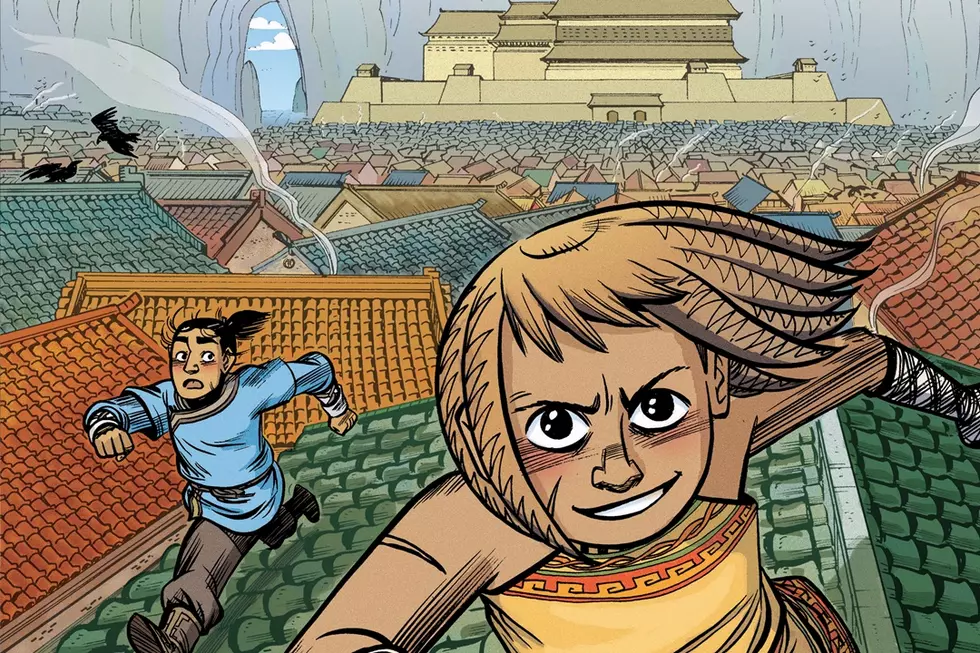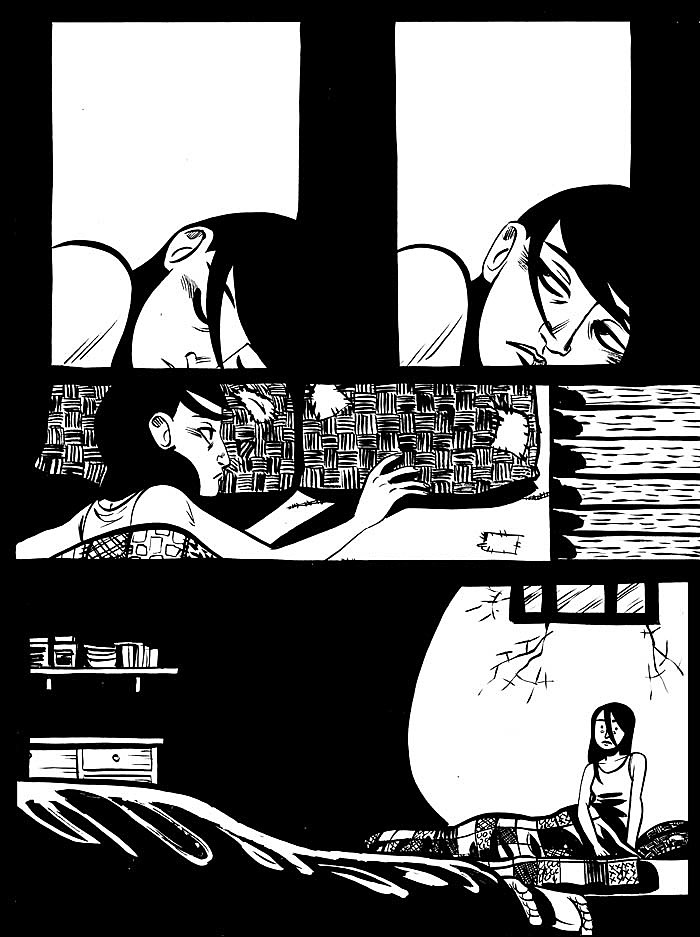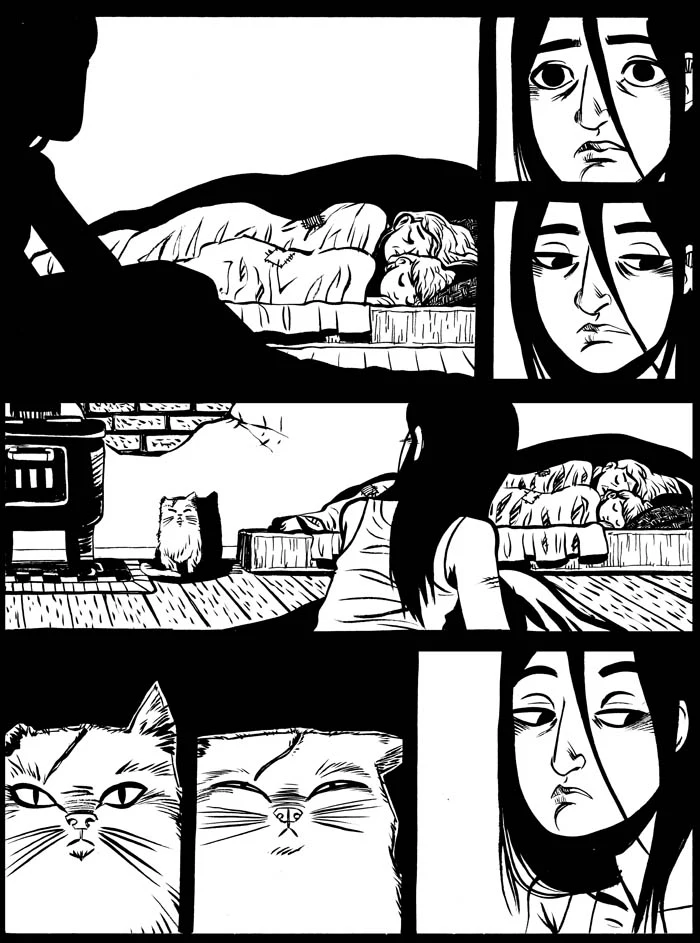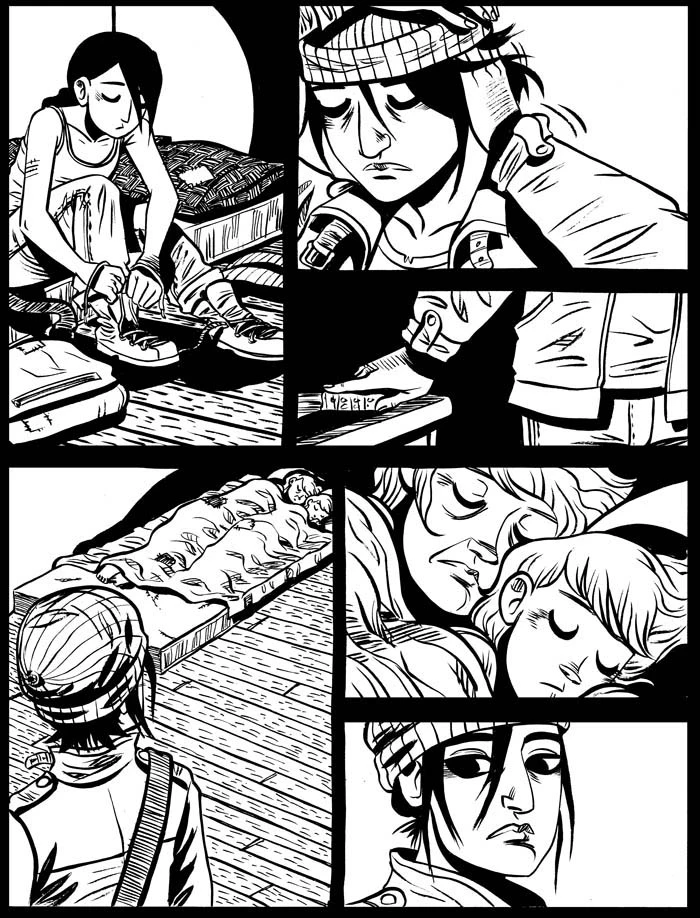
Faith Erin Hicks Adapts ‘The Hunger Games’ in a Five-Page Fan Comic

The Hunger Games is about to make its big-screen debut later this month, but how would the popular young adult novel series look as a comic book? Artist Faith Erin Hicks (Zombies Calling, Friends With Boys) decided to find out by adapting the first four pages of The Hunger Games into a fan comic. Hicks shared her art with ComicsAlliance, as well as her thoughts on the best way to transform prose stories into comic books, and why the "wall of words" has no place in a visual adaptation. Read more for the full comic and her commentary:
Back in 2010 I was between projects (translation: I was unemployed), I decided to adapt the first four pages of the popular young adult novel The Hunger Games to comics, just as a fun exercise. The Hunger Games is a very well-written book, and its language reminds me a bit of the way Cormac McCarthy writes: spare, brutal, nothing wasted. I wanted to try and depict that, and the grim and brutal world Suzanne Collins created, as faithfully as I could.
There are a lot of comics adaptations of prose novels, and some, like Darwyn Cooke's Parker graphic novels or Raina Telgemeier's Babysitter Club books, are quite good. Many others are not. I wanted my brief exercise in prose to comics to be informed by my opinions about what makes a comic book adaptation of prose work.
First of all, comics are a visual medium. Kind of obvious, right? But that's a huge issue I have with poor comic adaptations of prose novels: They drown in text. Often when I pick up an adaptation, I am confronted by a huge wall of words plastered all over the pages of the comic, and usually lifted straight from the prose novel. It seems that's what people think a comic of a prose novel should be: an illustration with text slapped all over it. I think it's awful. I hate adaptations like that.
Comics are visual. If you are a cartoonist translating a novel to comics, it is your job to take the words the author has written, and draw them. It is your challenge to make those drawings as evocative and moving as the prose. Looking back on my adaptation (which is over a year old), there are plenty of things I would do things differently now, but I think the story gets across the silent and spare beginning of the book.
In the first four pages of The Hunger Games, our anti-heroine Katniss prepares for her day. She wakes up in a circle of light surrounded by black. Katniss is a character who constantly fighting to survive, and for the survival of her mother and younger sister Prim. The world she lives in will probably kill her eventually, but for the moment, she is alive. She looks over for her sister, who has crawled out of her own bed and into her mother's bed. Then she sees Prim's cat, Buttercup.
There is a section in the pages I adapted where Katniss talks about her relationship with Buttercup. Katniss mentions how she tried to drown the cat when it was a kitten, and that their relationship has never been good, but now they have a truce because Katniss's sister loves Buttercup. I chose to illustrate those words on page 3, panels 4-7. We don't know Katniss tried to drown Buttercup, or that her sister interceded on Buttercup's behalf, but we know Katniss and the cat have a bad relationship. We see it in the way Katniss looks at Buttercup, and in the way the cat flattens her ears at the girl.
I could have added paragraphs of narration there, lifted directly from the book, but why? When you watch a movie adaptation of a book, does the director stick text from the novel right on to the screen? No, because movies are a visual medium. So are comics. You must convey the emotion, the setting, the relationships of the prose novel through your drawings.
Her staring match with the cat over, Katniss takes one final look at her sleeping mother and sister. (Much is made of her sister's resemblance to her mother in the book; Prim is pale and blonde, while Katniss is darker-skinned and dark-haired. The fact that the movie adaptation has ignored this is problematic to me.) Now prepared for her day, Katniss exits the house. The Seam, the coal-mining district that comprises her world, awaits outside.
-Faith Erin Hicks
More From ComicsAlliance

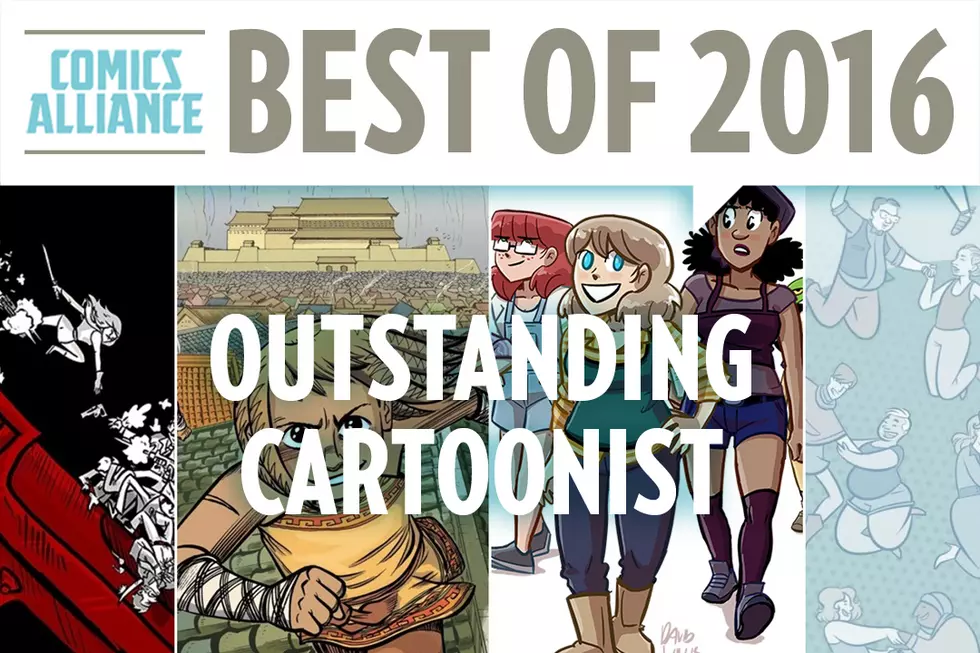

![Heroic Friend Fiction: Kamala’s Stories Come to Life in ‘All-New All-Different Avengers’ Annual #1 [Preview]](http://townsquare.media/site/622/files/2016/07/annual_featured.jpg?w=980&q=75)

![‘Attack On Titan Anthology’ Unites Manga And Western Comics Artists [Exclusive Preview]](http://townsquare.media/site/622/files/2016/04/AOT-Featured.png?w=980&q=75)
![Faith Erin Hicks Offers A Glorious Tour Of ‘The Nameless City’ [Review]](http://townsquare.media/site/622/files/2016/02/NamelessCity-feat1.jpg?w=980&q=75)
![Faith Erin Hicks Announces New (Non-Graphic) Novel, ‘Comics Will Break Your Heart’ [Exclusive]](http://townsquare.media/site/622/files/2016/03/Hicks01.jpg?w=980&q=75)
